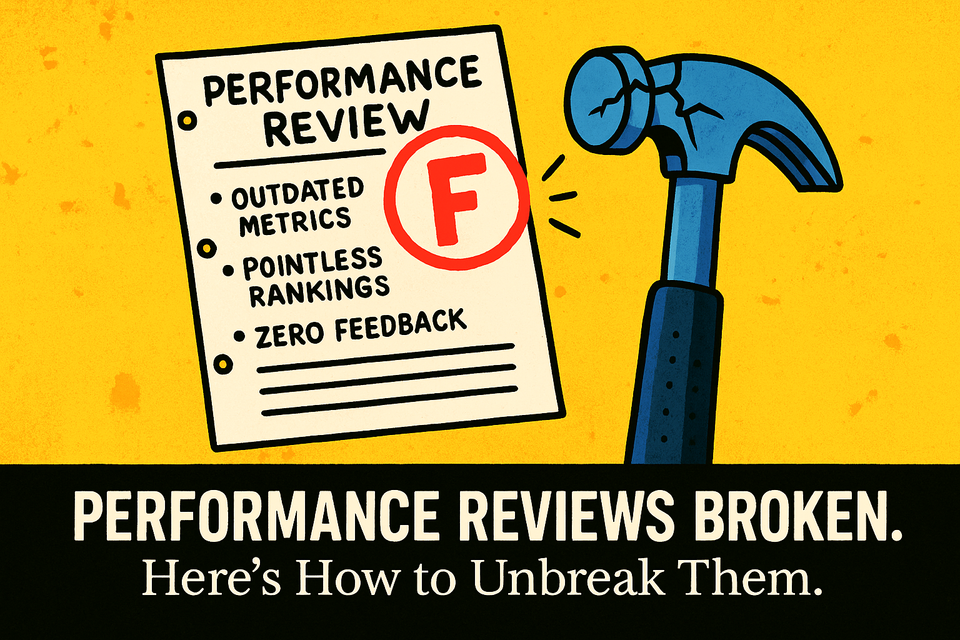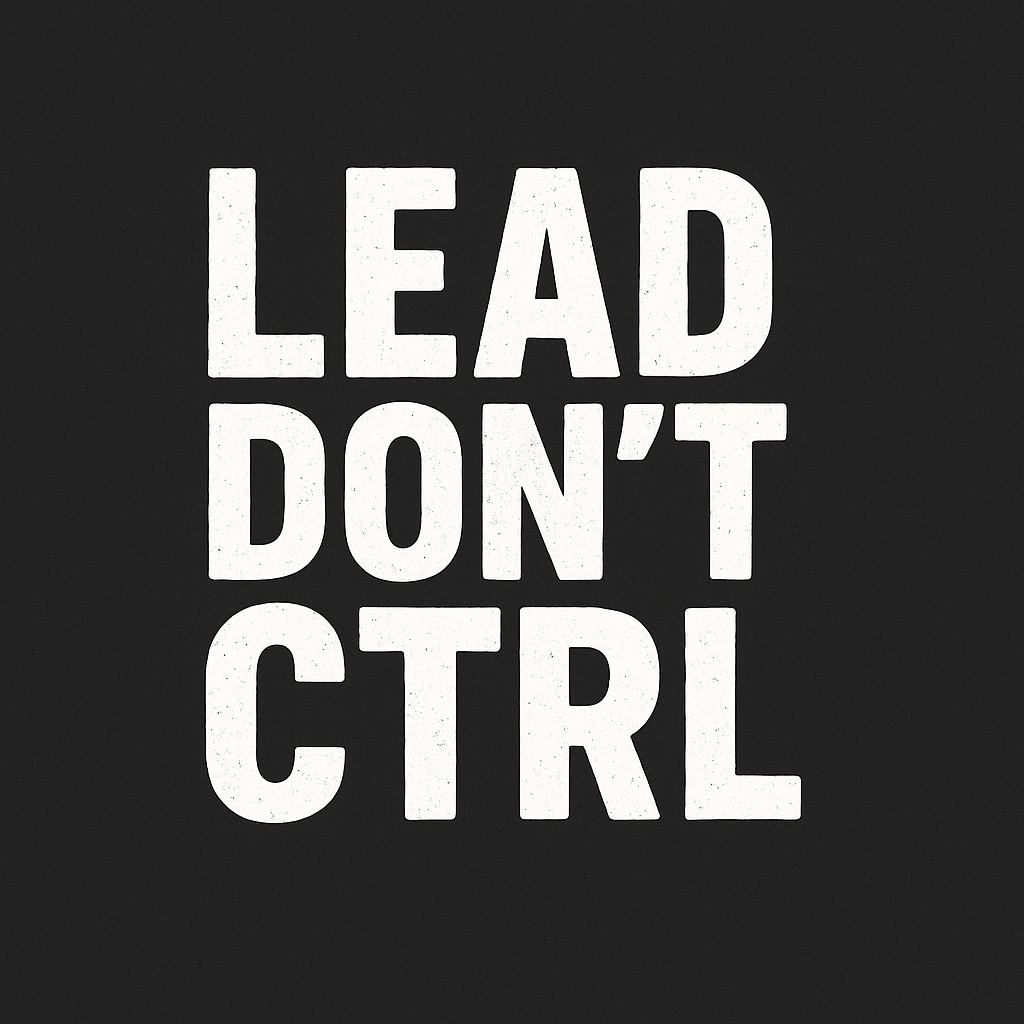Performance Reviews Are Broken. Here’s How to Unbreak Them.

Spoiler: It’s not with another spreadsheet and a 5-point rating scale.
Performance reviews. The corporate ritual where you pretend to be surprised that Susan crushed it and Chad coasted. Again.
It’s the awkward, once-a-year conversation where you dust off a doc, re-read emails from 8 months ago, and assign a number to someone’s soul like it’s Yelp for humans. All in the name of “growth” and “development.”
Let’s be real—performance reviews are broken. Not chipped. Not dented. Busted beyond repair.
So let’s drag this fossil out back and unbreak it. Here’s how.
🔥 1. Stop Doing Them Once a Year. Seriously. Stop.
You know what else we check on once a year? The smoke detectors.
Your team’s development shouldn’t be on the same schedule as your fire alarm batteries.
Feedback should be continuous, not crammed into a soul-sucking December ritual.
Instead:
- Do monthly or quarterly check-ins.
- Make feedback part of everyday conversations.
- Don’t wait until review season to say, “Hey, that project you crushed? Nice job.”
💩 2. Ditch the Corporate Buzzword Bingo
“Exceeds expectations.”
“Demonstrates ownership.”
“Aligns with strategic synergies.”
Cool. But what does that actually mean?
Be human. Talk like you’re trying to help someone grow, not trying to get promoted to middle-manager of the month.
Instead:
- Be specific. "You led that launch like a f***ing boss."
- Offer examples. “You took initiative when we hit that API limit, and that saved the team hours.”
- Speak to impact, not just output.
🎭 3. Stop Rating People Like Products
Imagine if your partner gave your relationship a 3.7 out of 5 for “emotional availability.”
(Actually, don’t imagine that.)
Now imagine you just spent a year pouring your soul into a product, mentoring junior devs, and solving every on-call nightmare—and you got a 3.5 because “you could speak up more in meetings.”
Numeric ratings flatten nuance. They don’t inspire growth. They inspire resentment, confusion, and people updating their LinkedIn.
Instead:
- Focus on narrative feedback.
- Use strengths-based assessments.
- Ask questions like, “What should they do more of? Less of? Try next?”
🧠 4. Account for Emotional Labor and Invisible Work
You know who keeps the team from imploding?
That dev who mentors everyone.
The one who organizes the offsite.
The one who runs incident calls like a trauma counselor.
How do you rate that on a scale of 1 to 5?
Spoiler: You don’t. You recognize it. You reward it.
And you start treating emotional labor like the asset it is.
🧨 5. Tie Reviews to Growth, Not Guilt
Too many reviews feel like:
- “You didn’t hit all these KPIs I didn’t tell you about.”
- “You made a mistake in April, and I’ve been waiting all year to tell you.”
- “This isn’t personal, but here’s everything you did wrong.”
No. Stop it.
Make reviews a launchpad, not a landmine.
Focus on:
- What lit them up this year
- What challenged them
- What support they need next
- Where they want to go
And then? Actually help them get there.
🚀 Performance Reviews Need a Revolution, Not a Template**
If your review process makes people dread December, you’re not leading.
You’re doing administrative cosplay.
Here’s how to unbreak it:
- Talk to your people. Regularly. Honestly.
- Throw the rating scale into a volcano.
- Reward what actually matters.
- Make growth the goal, not a report card.
Leadership isn’t about forms. It’s about people.
Unbreak your performance reviews. Start leading for real.
Lead. Don't Ctrl.

